Panoramic glazing of the loggia: pros and cons, interior design

The beautiful organization of a balcony or loggia is not just a touch, but an important addition to the complete image of an apartment. Moreover, by arranging this zone, you can add functionality even to this territory. She will become beautiful, practical and will not be deprived of the attention of household members.
To organize a cozy and modern balcony, not only its decoration, the choice of furniture and decor are important, but also the very method of protection from atmospheric phenomena. For example, the panoramic glazing of the loggia, which is not tied to the finish, becomes a serious transformation of this part of the apartment.
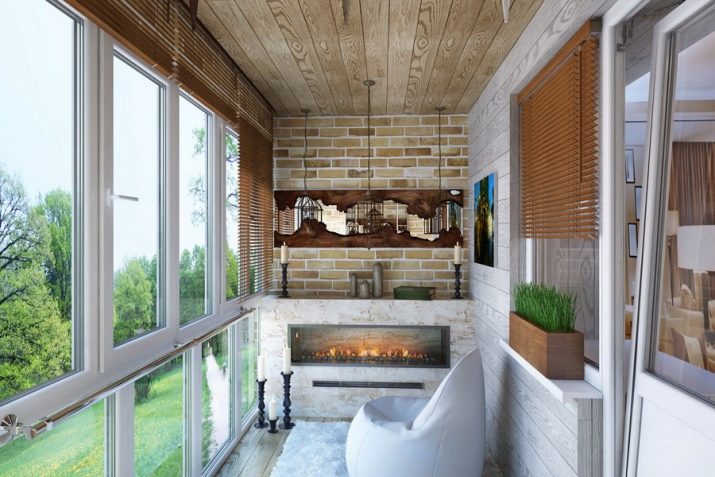
Advantages and disadvantages
With this type of glazing, the windows are stretched to the entire front wall of the loggia or even to all three protruding walls (but this option is appropriate for a balcony). All construction innovations have both undeniable advantages and some disadvantages.
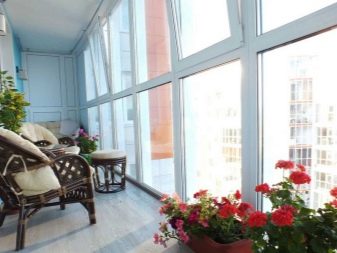
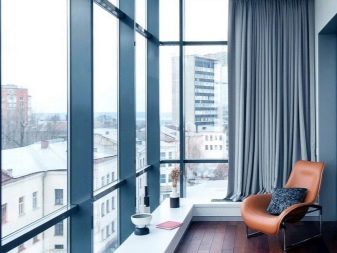
Advantages of panoramic glazing:
- if you live on high floors, and outside the window you have a picturesque view, the loggia glazed to the ceiling will reveal it as much as possible and make it the dignity of your home;
- there will be more light on the loggia itself, which means that there will be more opportunities for using it as a winter garden or a summer flower garden;
- the costs of interior and exterior decoration of the loggia will be lower, since some of it will be on glass;
- not much, but the useful area of the room increases.
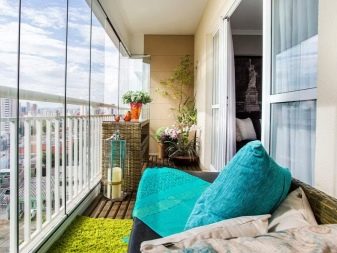

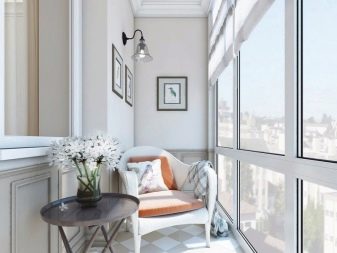
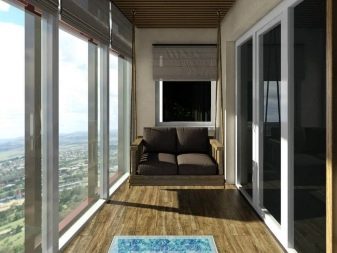
Finally, if in the future you decide to rent or sell an apartment, then glass to the floor will possibly increase the price of housing.
The main reason why the owners decide to opt for panoramic glazing is the aesthetics of such a solution. It stylish, beautiful, looks noble. But if the view behind the glass is far from the criteria of beauty, then panoramic windows do not make much sense.
Such a construction project was not without its drawbacks. For example, the cost of panoramic glazing can not be called low. You will have to do a lot of preliminary work - choose the type of glass, design, estimate the load and much more. And you also need to get permission to rebuild the loggia and install an air conditioner or split system.
If panoramic glazing is made in an apartment on low floors, its so-called visibility increases. Of course, this can be solved by installing blinds, but then the meaning of glazing from floor to ceiling is lost.
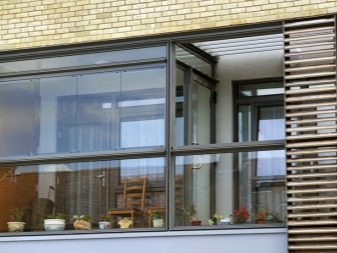
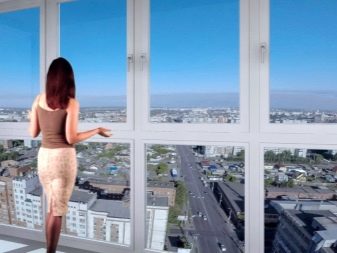

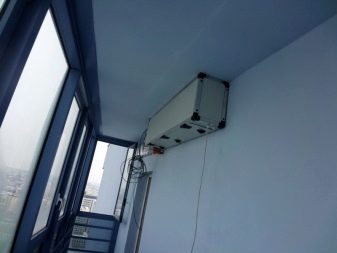
If the pluses overlap the possible minuses, and on the loggia you want to create a stylish and highly aesthetic space from the door to the smallest details in decoration, you can start implementing the project. Only first you need to decide on the type of glazing.
Views
There are two ways to glaze the loggia, they have both external differences and constructive ones. The first method is frameless glazing. Its essence lies in the name itself. The structure looks like a glass box, the loggia looks weightless and light.
The hardened glass of the master is fixed on roller guides from below and from above, after which they are fixed to each other. The doors open inward, and they can also be moved "accordion".
This type of glazing has unusual, very modern design. Such a loggia is easy to care for.... The room gets maximum natural light, and the view also opens without any interference.
But frameless glazing is not complete without drawbacks: the isolation of such a loggia is low, that is, it will not work to make a warm space out of it. You can't install mosquito nets either. Finally, the structure can deform under the force of natural elements (even hail is a threat).
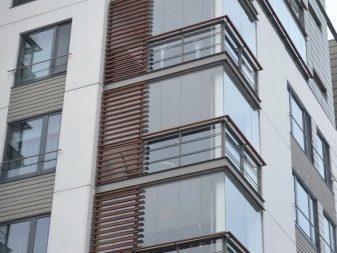
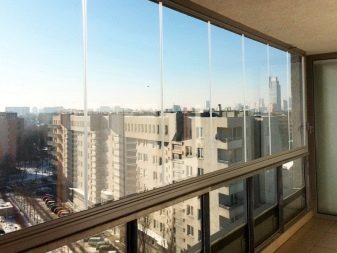
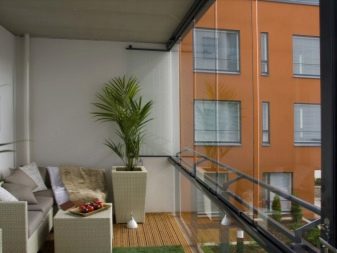
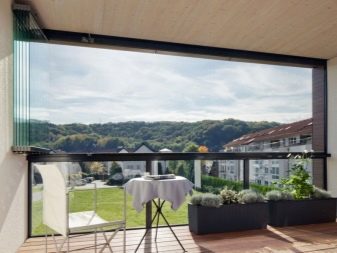
Frame glazing is definitely an option for greater reliability. If the loggia is on high floors, and the house is in an open area, this would be a good idea. It is easier to isolate a room, you can also make it warm. Sometimes such a space is even turned into a living room. And often a loggia with panoramic windows becomes a place for tea drinking, family gatherings.
She can acquire the status of a mini-cabinet, a workshop, and a winter garden. And with the possibility of restructuring space due to the loggia, the kitchen can be enlarged, and with panoramic windows it will look especially impressive.
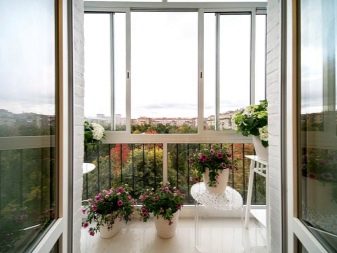
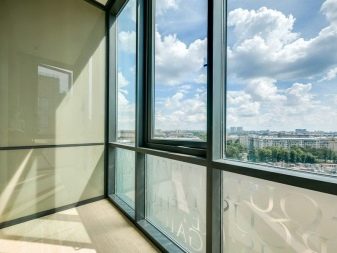

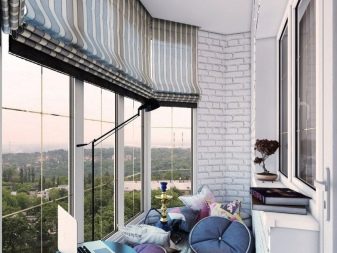
Materials (edit)
The frames themselves are made of plastic, aluminum, fiberglass. Plastic frames are suitable for warm glazing, do not interfere with the installation of mosquito nets, offer several options for opening mechanisms. But since the structure will weigh more, in most cases it is necessary to strengthen the bearing plate before glazing (when it comes to the balcony).
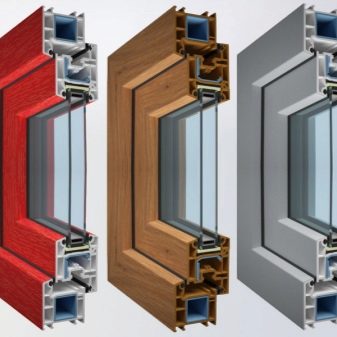

Aluminum frames are another material option for panoramic construction. They serve for a long time, are suitable for both cold and warm rooms. But in terms of cost, they are inferior to plastic models.
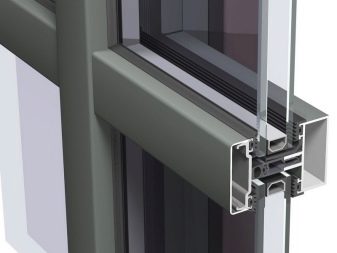

Glass composite - the latest material that allows you to create modern frames with high thermal insulation characteristics and resistance to mechanical deformation. They also cost a lot.
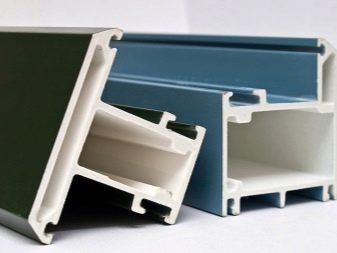
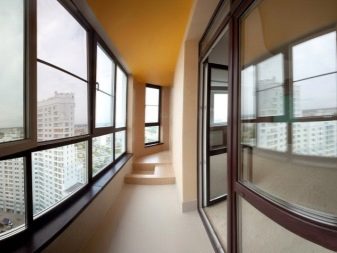
How to choose?
You will also have to choose glass. And quite strict requirements are also put forward to them. It must be a high-quality shockproof material, the thickness of which is at least 8 mm.
Glasses can be:
- mirrored;
- low emission;
- tinted;
- electrochromic.
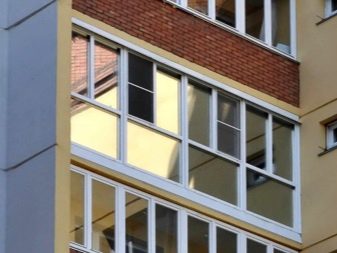
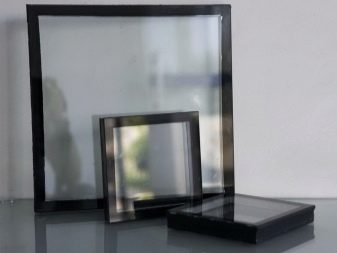
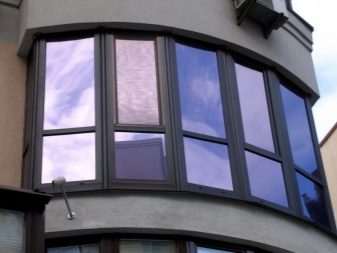
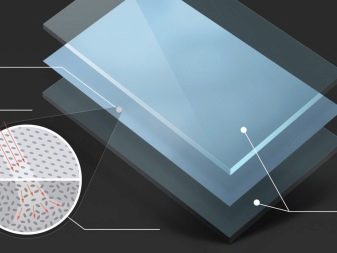
If the glass is coated with a special composition, it will become mirror-like. Electrochromic glasses have such a feature as a change in the light transmittance, moreover, it is controlled by its remote control (the remote control is attached). Low-emissivity glass has the ability to block infrared radiation. This glass is considered to be heat-saving.
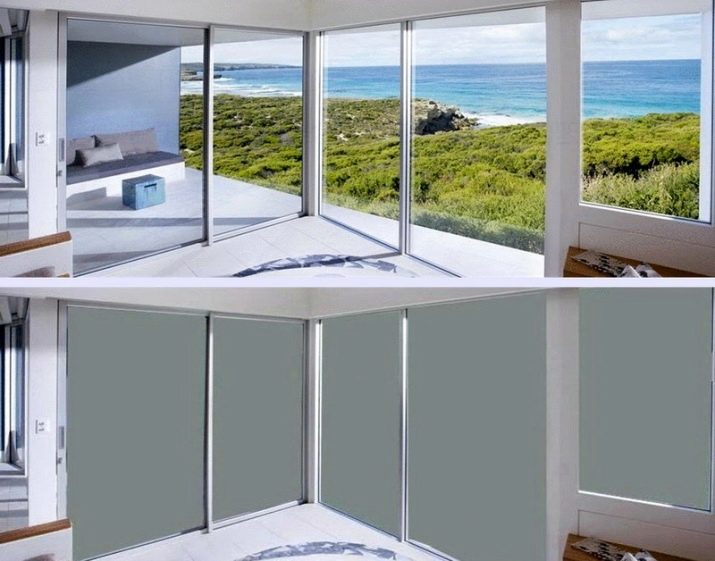
If your goal is panoramic glazing of a loggia with a complete replacement of components, this will be replacement of the so-called cold frame with a warm profile with a large high-quality glass unit included. The number of glasses in a double-glazed unit, the type of fittings and profiles - all this depends on the availability of sufficient funding and the customer's capabilities.

If a panoramic window is planned on a loggia of 4 or 5 square meters in order to organize a greenhouse or expand a living room, it is worth taking a closer look at modern multifunctional glasses... Yes, they are not cheap, but the design is distinguished by the presence of an inert gas between the panes, due to which the panoramic glazing will retain heat as much as possible.
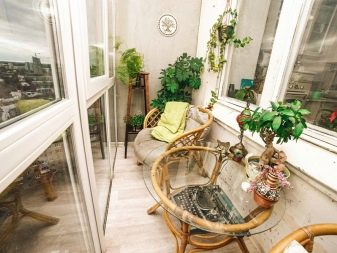

Whatever you choose, remember that panoramic glazing requires special permission. If such a loggia or balcony changes the appearance of a residential building (and in this case it is), you will break the law without obtaining special permission. Usually, the owner applies to the BTI (Bureau of Technical Inventory), which commissions the house (or a similar body), writes a statement to which he attaches a diagram of changes related to panoramic glazing.


Professionals must establish that the applicant's requirements correspond to the standards of fire, sanitary and hygienic safety, that it is possible to operate such a room, and this does not infringe upon the rights of neighbors and other persons. If the applicant complies with all the requirements, he is issued a permit, on the basis of which he starts work. Then the BTI specialists will give him a new registration certificate for the premises.
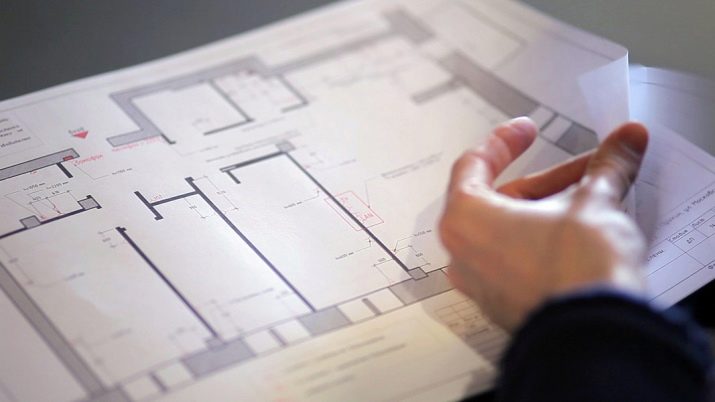
If the house is a historical or cultural object of the housing stock, you will most likely be refused panoramic glazing.
Installation tips
All information provided below is for informational purposes only. Any work related to the installation of panoramic glazing, the transformation of handrails and fences, is carried out according to a professional scheme, individual and drawn up by specialists regarding your balcony or loggia.
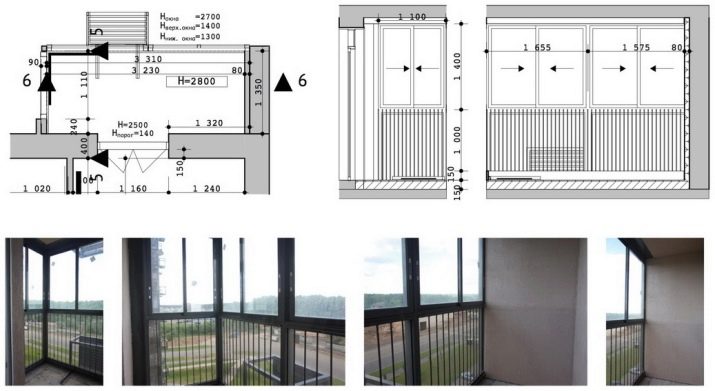
Before installing the system, the room itself must be prepared. All things are removed from the balcony / loggia, the space should remain completely empty. The old glazing and frames are removed by specialists. The design is maximally cleared of dust and debris. Is happening strengthening the balcony slab.
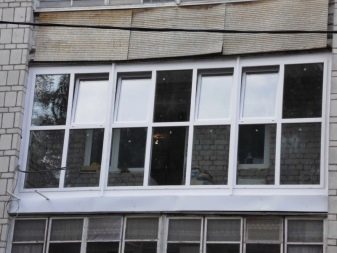
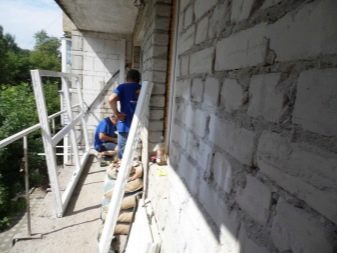
The standard procedure for panoramic glazing includes a series of steps.
- Experts make markings with a plumb line or spirit level, to place the new window profile. They measure everything scrupulously, because the glazing must be impeccably vertical.
- The finished profile of the master is applied to the markup, making sure again that it is applied correctly.
- The upper profile is attached to the upper floor on special anchor bolts. The length of the bolts will depend on the thickness of the slab. The lower profile is attached either to the parapet or to the balcony floor.
- If the glazing is frame, then the frame structure will be attached to the profiles and side walls.
- After installing the profiles, it remains only to insert the sashes into them according to the instructions, after checking the performance of the entire structure (if the glazing is frameless). If we are talking about frames, you need to insert double-glazed windows into them.
- Seams and joints are treated with polyurethane foamas well as modern high quality sealants.
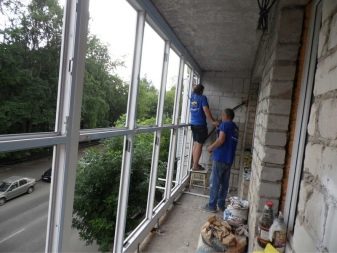
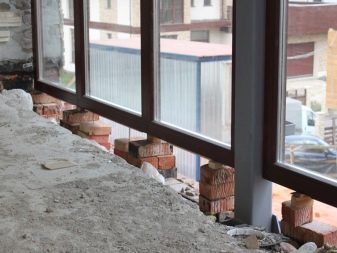
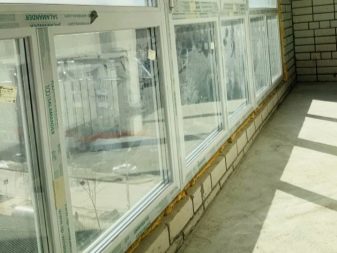
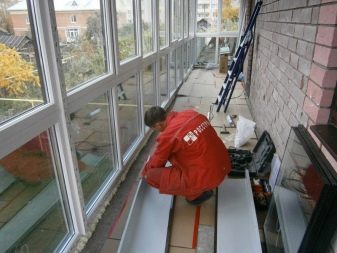
Work on the insulation of the loggia / balcony is carried out after glazing. Do not resort to independent work on glazing: such a structure will not have a guarantee, and there are a lot of risks.
Balcony finishing
The owners can think over the interior of such a modern balcony or loggia to the smallest detail. What is inside the room should gracefully emphasize the windows to the floor, the design should not contradict the very idea of panoramic glazing. If there is a lot of bulky furniture on the balcony, it will be impossible not to close the windows, which is completely unprofitable. That's why the interior needs to be arranged in such a way as to emphasize all the advantages of the glass "wall".
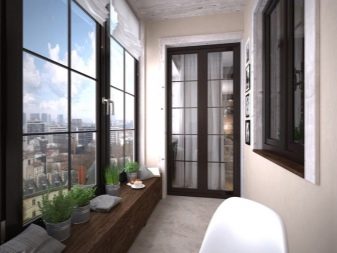
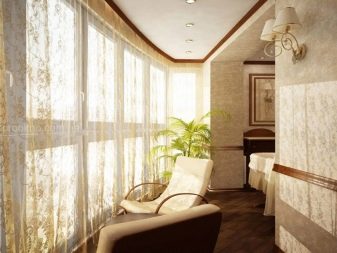
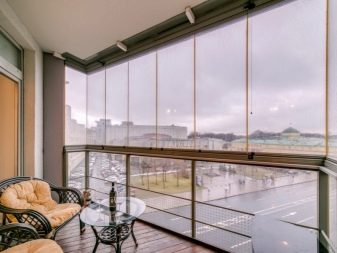
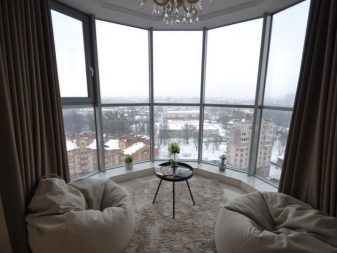
Consider the possibilities of finishing and arranging a balcony / loggia with panoramic glazing using beautiful examples.
The brick wall can be painted, and if the wall is ordinary, then it can either be pasted over with thick wallpaper "like a brick", or trimmed with artificial stone. The floor can be anything, and expensive high-quality linoleum will not interfere with a harmonious finish. A stretch ceiling with spotlights will complete the look.
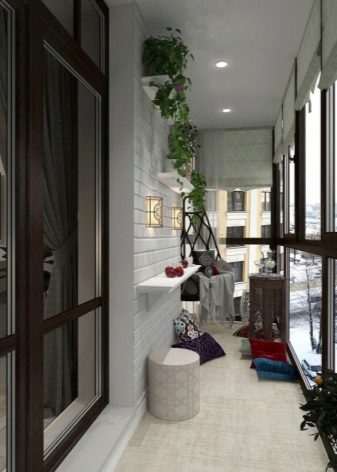

This balcony has a very simple, discreet finish. Plastered walls, laminate on the floor (linoleum "under the laminate" or "under the parquet board" is possible). If the ceiling is flat, you can simply paint it. Good combination of floor and frame colors.
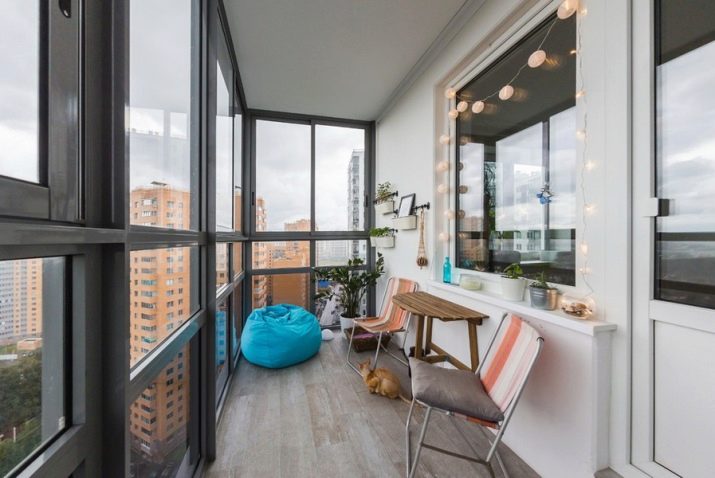
You can decorate a balcony or loggia with plastic panels, siding. This option is already becoming traditional and it is popular, among other things, due to its financial affordability. The flooring is laminate or linoleum.
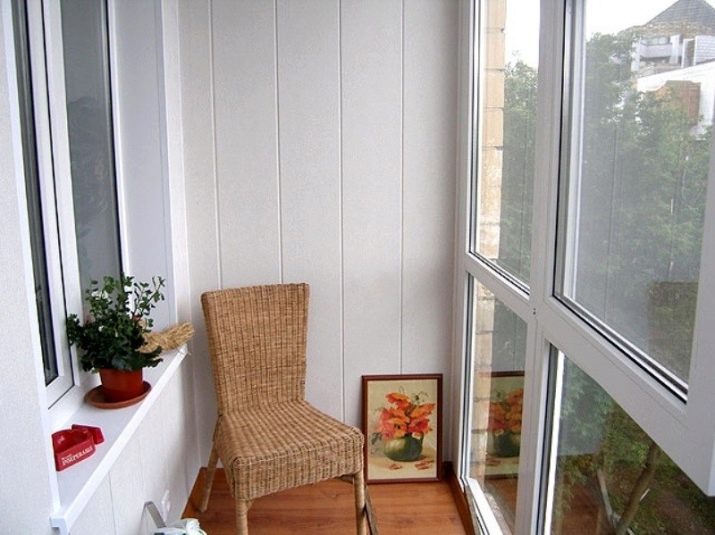
If the space is large, it will be actively used and it is possible that it will be crowded, the floor is preferably finished with tiles or porcelain stoneware.
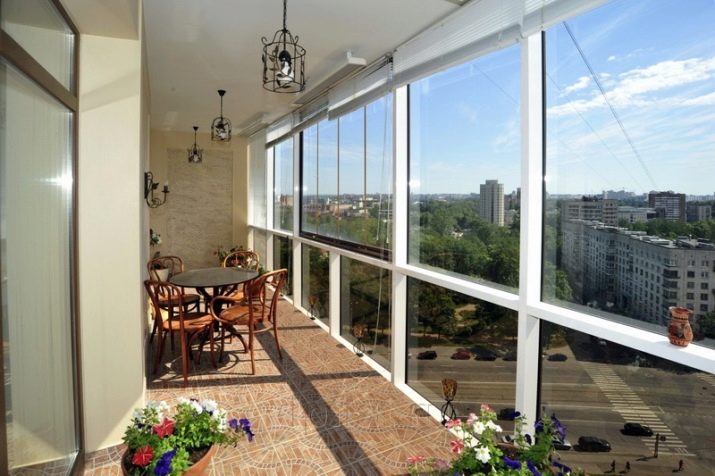
Such options are economical and look very nice if the loggia is not the largest in size. If the walls on it are brick, then there is no need to reinvent the wheel. And such a miniature sofa, pay attention, can also be a storage place.
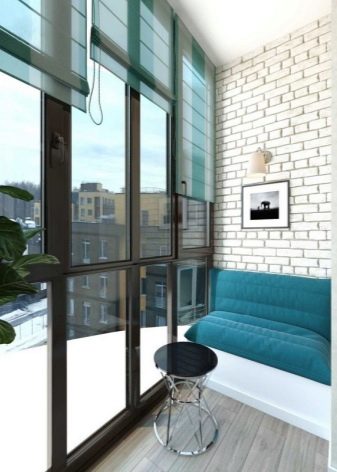
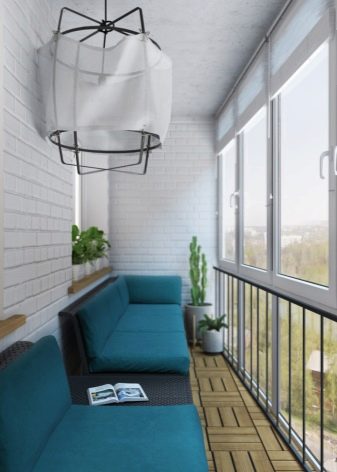
Artificial decorative stone on the wall almost always looks impressive. And having spent once on such a decoration, the owners understand that it will last for a long time.
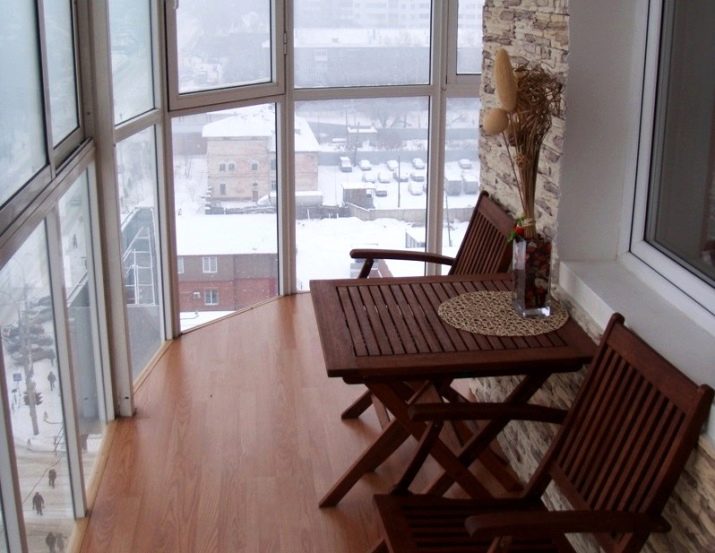
Self-leveling floor is not a cheap option, but for a representative modern interior you can go for such expenses. There will be even more light in the room.
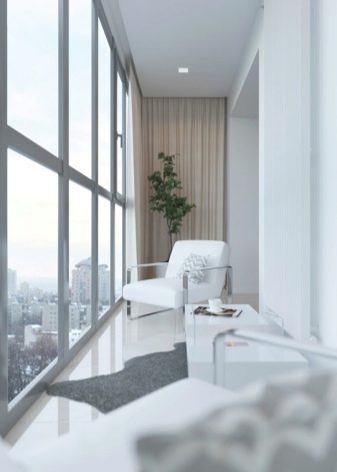
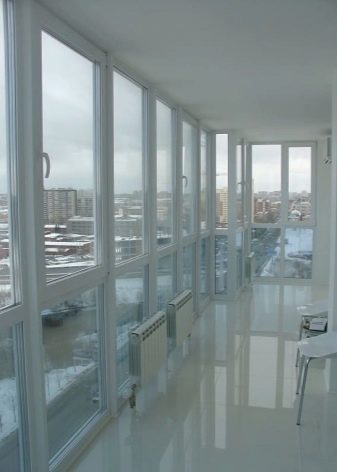
There are no strict requirements for the decoration of such a balcony, the main thing is that all materials are “friendly” with each other, emphasize the magnificence of large windows and do not cause problems in operation.
For information on how to make panoramic glazing of a loggia, see the next video.








